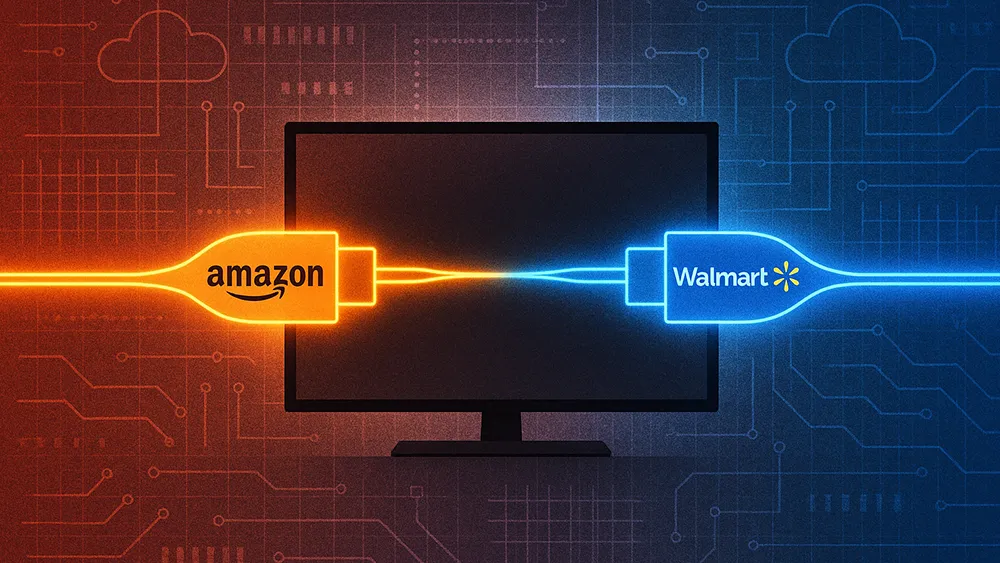The recent partnership between Netflix and Amazon signals a new phase in the streaming wars. Instead of content ownership, the battle now centers on who controls the underlying infrastructure: the data, the measurement, and the pipes that deliver and monetize it.
For an expert's take on the implications of these streaming partnerships, we spoke with Jack Wagner, a digital media executive who specializes in advertising technology. As the founder of Hawk Digital and a member of the Forbes Business Development Council, Wagner specializes in advising global broadcasters and tech platforms. For him, these strategies are a long-term playbook for establishing market control.
"You have what I call the perfect storm. The broadband pipes are laid, you have the devices, and you have ATSC 3.0 chips embedded into the TV sets. Now, you can allow for a similar functionality and interactivity across any device or form factor," Wagner says. For decades, true interactive TV was a dream confined by slow connections and one-way hardware. Now, widespread broadband, mass device penetration, and advanced hardware have finally unlocked the two-way capability legacy cable operators have always lacked. This new foundation is built for transforming your TV into a storefront.
Building the walls: The Netflix-Amazon deal helps formalize streaming as a performance-driven ad market, Wagner explains. To avoid the cost of building its own advertising infrastructure, Netflix plugs directly into Amazon’s established platform. This move gives Amazon access to some of the most premium streaming inventory available, creating a powerful, self-contained ecosystem. "It becomes more automated, which I call self-serve. You can buy through a console similar to how you're buying on Meta's platforms. So I think they're moving into what is a walled garden, a closed-loop of premium inventory."
But the Amazon and Netflix alliance is set to square off against another powerful partnership in the space. Walmart's acquisition of Vizio represents a direct play to build a rival ecosystem that merges entertainment with commerce, setting the stage for a new competitive arena. Here, smart TVs become interactive storefronts powered by extensive data collection, Wagner explains. "Walmart acquired Vizio because it wants to embed Walmart+ into the TVs and create unified shopping experiences. Pop-ups can ask if you need milk or toilet paper, and let you order with one click. They're trying to create convenience for users and a full omnichannel distribution path."
Under these partnerships, premium content like live sports can be a powerful lever. By combining a sought-after TV event with its massive trove of retail data, Amazon's acquisition of expanded coverage rights for The Masters golf tournament changes the equation. "You talk about the upfronts and decline? I see it the opposite way. They're going to be walking in there with the Masters. It doesn't get any more classic linear TV than that." For Wagner, the moment warrants a conversation about the consolidation of influence in a market some feel is declining.
A seat at the table: The result is a coming wave of hyper-personalized ads, Wagner predicts. For example, he describes "scene activations" where computer vision can dynamically insert brands into shows based on a user's viewing history and profile. "We're going to see brands engaging and using technology, particularly computer vision technology, to embed brands and logos into specific spots. We can then retarget you in your movie and pop it up on your door or your chair that you're sitting on. Those types of technologies are available now."
History repeats itself: But this strategy is not new, Wagner explains. Instead, it represents a playbook that has run for decades, where acquisitions serve the dual purpose of adding technology and absorbing the competition. "Our biggest pre-roll provider got bought by Google around the same time they bought DoubleClick. The company acquires these firms but then halts their ability to distribute or further develop that technology independently. In tech, the biggest thing you have is your control of your own fiefdom."
The endgame is to become the essential connective tissue of the entire media economy, Wagner concludes. Already, these seemingly futuristic technologies are a reality in markets like South Korea, offering a roadmap for where the U.S. is heading next. "Our country actually is behind in this category. In countries like South Korea, they've been doing some of this stuff for five or six years, and it's already built into their ecosystems. A lot of this was held up in our country by cable operators and licenses. We had to sit around for 20 years while everyone sued each other to be able to get streaming to where it is today."

